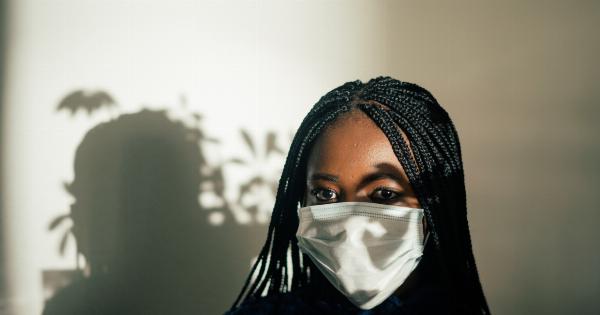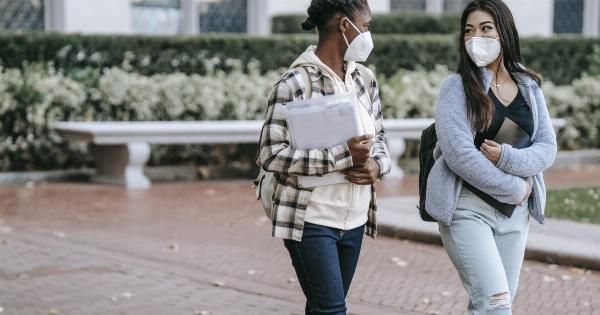Wrinkles are a natural part of the aging process and can be influenced by a variety of factors. One of the most significant factors that contribute to the development of wrinkles is sun exposure.
The harmful ultraviolet (UV) rays emitted by the sun can penetrate deep into the skin and cause damage to the supportive structures that keep our skin firm and supple. In this article, we will explore the connection between the sun and wrinkles and discuss ways to protect our skin from sun damage.
The Role of Ultraviolet (UV) Rays
Ultraviolet (UV) rays emitted by the sun are classified into three categories – UVA, UVB, and UVC. UVA rays have the longest wavelength and can penetrate deep into the skin, causing long-term damage.
UVB rays, with a medium wavelength, primarily affect the outer layers of the skin and are responsible for sunburns. UVC rays have the shortest wavelength and are absorbed by the Earth’s atmosphere, posing no threat to our skin.
When UV rays penetrate the skin, they are absorbed by the cells, leading to the formation of free radicals. These free radicals can damage collagen and elastin fibers, which are essential for maintaining the skin’s elasticity.
As a result, the skin becomes less firm and more prone to developing wrinkles.
Effects of Prolonged Sun Exposure on the Skin
Prolonged sun exposure can have a significant impact on the health and appearance of our skin. Here are some of the effects:.
1. Premature Aging
Excessive sun exposure accelerates the aging process, leading to the premature development of wrinkles, fine lines, and age spots.
This occurs due to the degradation of collagen and elastin, which are responsible for maintaining the skin’s structure and firmness.
2. Photoaging
Photoaging refers to the specific type of aging caused by sun exposure. Compared to the natural aging process, photoaging tends to result in more pronounced wrinkles, sagging skin, and a leathery texture.
This is because UV rays damage the dermis, the middle layer of the skin, leading to the breakdown of collagen and elastin fibers.
3. Sunburn
Sunburn is a visible sign of sun damage and occurs when the skin is exposed to excessive amounts of UVB rays. Sunburned skin is red, swollen, and painful and can peel or blister. Repeated sunburns increase the risk of developing skin cancer.
4. Skin Cancer
Excessive sun exposure, especially without adequate protection, increases the risk of developing skin cancer. The most common types of skin cancer include basal cell carcinoma, squamous cell carcinoma, and melanoma.
UV rays can damage the DNA in skin cells, leading to the uncontrolled growth of abnormal cells.
Protecting the Skin from Sun Damage
While it may not be possible to completely avoid the sun, there are several measures we can take to protect our skin from sun damage:.
1. Apply Sunscreen
Using broad-spectrum sunscreen with at least SPF 30 is crucial. Apply it generously to all exposed areas of the skin, including the face, neck, ears, and hands. Reapply every two hours or more frequently if sweating or swimming.
2. Seek Shade
Whenever possible, seek shade, especially during the peak hours of sunlight between 10 am and 4 pm. This reduces direct exposure to harmful UV rays and lowers the risk of sunburn and skin damage.
3. Wear Protective Clothing
Wear long-sleeved shirts, pants, and wide-brimmed hats to shield your skin from the sun’s harmful rays. Opt for tightly woven fabrics that provide enhanced sun protection.
4. Use Sunglasses
Protect your eyes by wearing sunglasses that block both UVA and UVB rays. Look for sunglasses labeled with 100% UV protection or UV400.
5. Avoid Tanning Beds
Tanning beds emit UV rays that can be even more harmful than sunlight. Avoid using tanning beds altogether to reduce the risk of skin damage and premature aging.
6. Check Your Medications
Some medications can increase the skin’s sensitivity to the sun, making it more prone to sunburns and other damage. Consult your healthcare provider or pharmacist about the potential side effects of your medications.
Conclusion
The connection between the sun and wrinkles is undeniable. Prolonged sun exposure can lead to premature aging, photoaging, sunburn, and an increased risk of skin cancer.
Protecting our skin from harmful UV rays is crucial for maintaining its health and youthful appearance.
By following preventive measures such as applying sunscreen, seeking shade, wearing protective clothing, using sunglasses, avoiding tanning beds, and considering medication interactions, we can minimize the damaging effects of the sun and promote healthier, wrinkle-free skin.



























